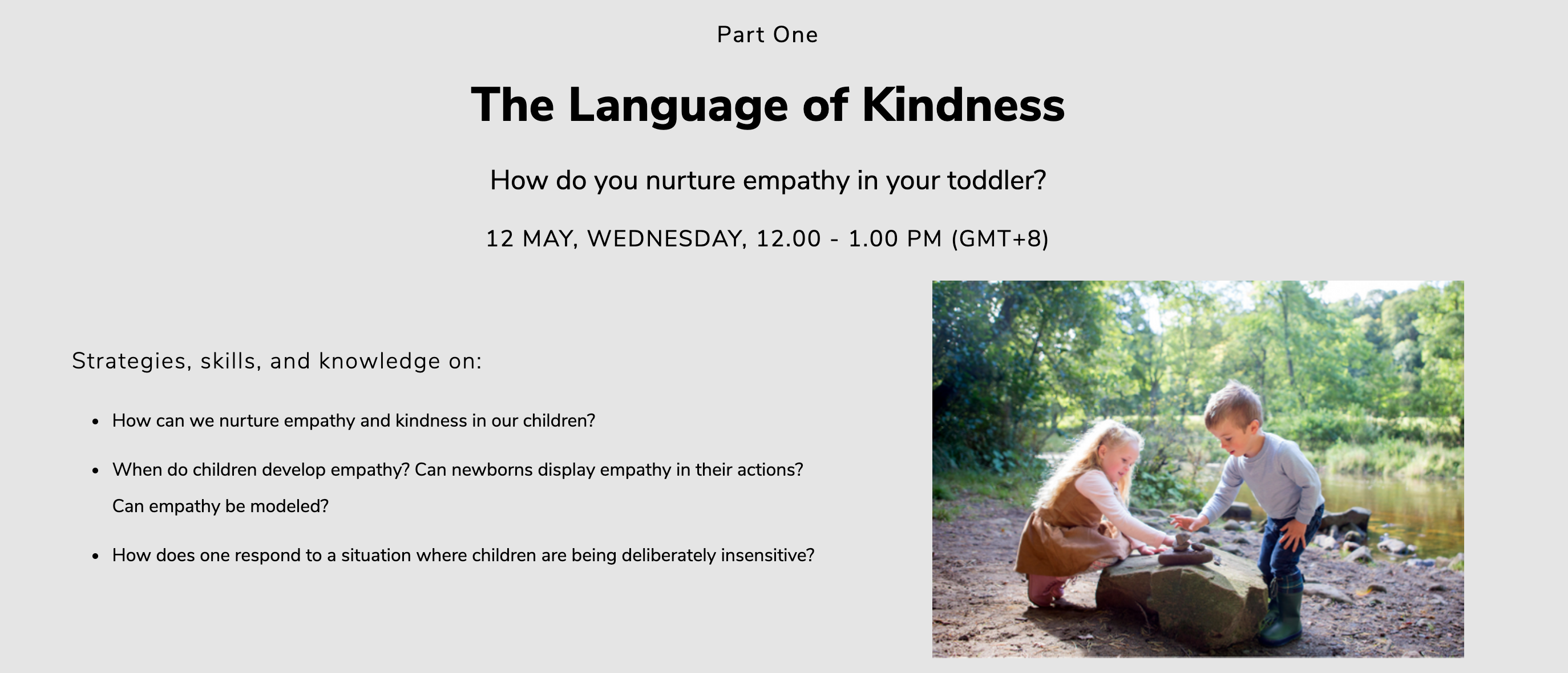-1.png)
EtonHouse Singapore
Denise Teo, Pedagogue at EtonHouse International School
Q: My daughter, 10 years old started to rebel and is not motivated to study. Would like to hear parenting advice on how to raise a self-motivated happy child?
Denise: It must be very disconcerting to see your daughter "rebel" and do things that are against your wishes. It sounds like your daughter is having a hard time and is stressed about something. The stress that a typical 10-year-old may be under often is a result of trying to deal with all the physical changes and other shifts in her life. It would be a great start by connecting with her. Listen to the challenges and fears that she may be facing.
Sometimes, it could school demands and feeling like she is not good enough, friendship issues such as peer rejection that could be stressors for her. Lean in and listen, do not discount them and think of them as unimportant and inconsequential. Many parents fall into the trap of not listening, connecting and communicating with their child before correcting behaviours. It often ends up in a power struggle and having rebellious responses. Tackle each fear, challenge and negative response one at a time. When it comes to homework and revising of school work, set agreed routines and expectations. Always offer a safe place for your daughter to come to you if she needs help by saying "I'm here if you are stuck".
You can also build into your routine some one on one time with your daughter, no agenda, no lecturing. Just simply enjoying each other's company. Fill her cup until it overflows, therein lies the secret to contented, regulated and responsible children.
Q: How do you establish your own personal boundaries as a parent through a Respectful Parenting approach? For example, if you need some alone time, or if you’d like to ask your child to stop doing something that is making you feel uncomfortable. How do you communicate with your child on this?
Denise: This is a great step towards modelling how one can manage negative feelings and emotions for our children. They are excellent observers and take in more of what they see versus what is being told to them. When you are communicating with your child, be explicit in telling them no, why it is not ok, offer them a suggested replacement of behaviour and what will happen if they continue. This sets an expectation for a healthy boundary for your child to exercise choice. For example, you can say "Stop bouncing on the sofa, it disturbs everyone who is trying to enjoy the TV show, would you like to take your bouncing elsewhere? Like the beanbag? if you continue, we may have to have you seated away from all of us."
Often we expect our children to understand that some of their actions have adverse consequences to others, but in reality, it isn't the case. They need to be supported to understand this.
Lisamarie Hughes, Principal, EtonHouse International School Sentosa 
Q: We often face a situation when we give certain instructions to children in a soft and gentle tone, they tend to ignore and continue doing what they have been doing. It is only when we raise our voices and get angry and stern that they listen.
Lisa: This can be a tricky moment, especially when you have tried using a friendly tone. Many parents will connect with this scenario and it is interesting to unpack how we can return to speaking to gain traction versus loud voices. Children have amazing brains and they learn to filter out lots of audio as they grow, this is a natural skill that we all acquire into adulthood and sometimes filtering out audio input can be a choice.
Children may have developed a radar to only take note when loud voices are used if this has become the norm or they may have also used this as a measuring tool to know when you are serious and they need to respond. Either way, removing loud voices and limiting reaching the red zone as a parent is not only beneficial for your child's wellbeing but also your own. Make a promise to yourself that you are going to try 'not to go there' and think about future communication tools we want children to have.
For example, we do not want them to learn that anger and loud voices gain results in the future. It is quite fun to shake things up so the next time you ask your children to move on to their homework or a bath, try a 'whisper'. This change in tone and volume will intrigue your child. Stand close by and in view so the whisper can be heard and share that moving forwards you trust he or she will listen and you feel they deserve softer tones and so do you.
Also, consider the time your request is made and if it is the right moment. For example, has your child just started enjoying a game or listening to favourite music (older children). Perhaps you can agree on what needs to be done and leave some room for negotiation. For example, "I can see listening to music is important to you and I want to you relax and enjoy it. Would doing your homework first be better and then you can have time to unwind with your music or do you want to set a fair amount of time with me and we can agree when you will start your homework afterwards?" Conversations and setting agreements that feel fair to children are helpful.
Q: How do you handle situations when certain choices are not one the child is capable of making? For example, safety issues.
Lisa: This is a great question and something we face every day as children and adults. There are things that happen in life or things that we are required to do when choices may not be conducive. For example following safety protocols when crossing the road or washing our hands is a basic hygiene practice before a meal. When these situations occur, we can aim to neutralise the resistance by making children feel they are facing these scenarios with us rather than it being expected of them alone.
Respectful interactions can still be attempted even when there is no choice. Discuss the situation at a level appropriate for your child's age and use 'we' rather than 'you'.
Lastly, a friendly tip would be to acknowledge why it may not be the most ideal thing to do and then explain why it is important for everyone. Adding in a fun challenge may help as well. For example, "I know it is really hard waiting for the traffic lights to change for us to cross the road. Someone put them there to keep all of us safe! What a great idea! They tell the cars to slow down and stop so we get to cross safely. Let's count how many seconds it takes for the lights to change colour."
Get more tips and strategies during our EtonHouse Parenting Webinar Series. Register now.



